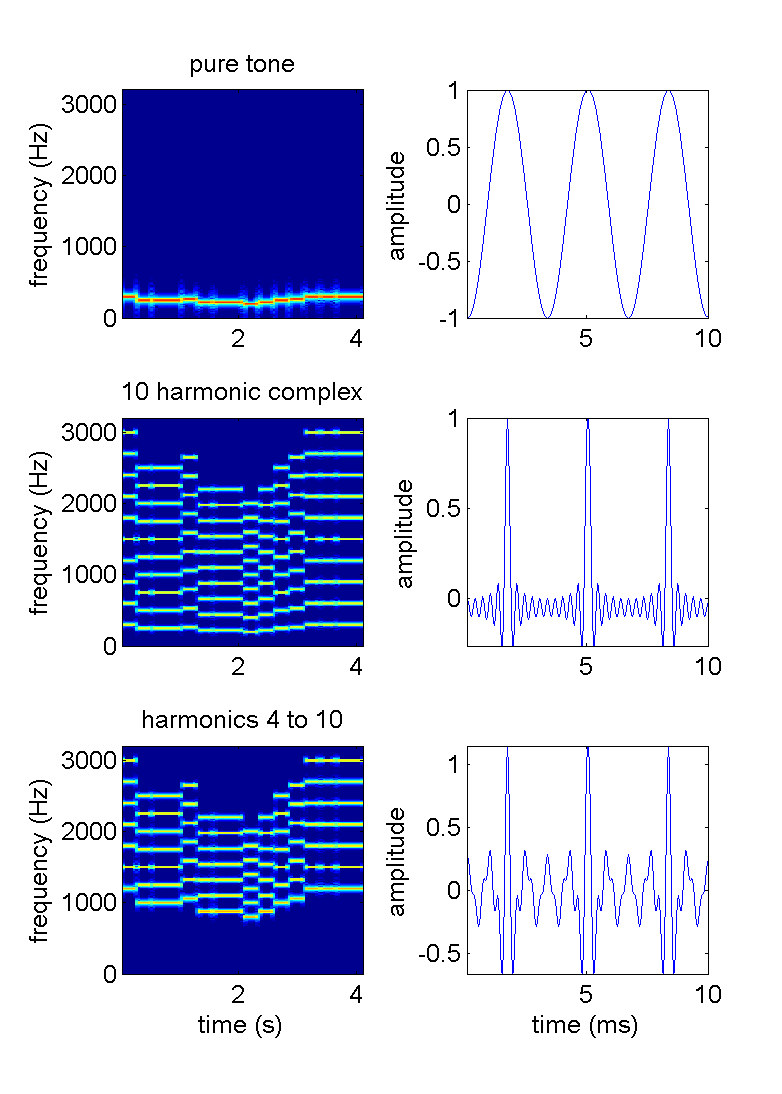As explained in the section on modes of vibration. most natural sound sources will not emit pure tones, but sounds composed of many, often harmonically related frequencies. Now, some texts on hearing will tell you that the pitch of a sound is "related to the sound's frequency", but if a sound contains many (possibly harmonically related) frequencies then it may not be at all obvious which of the sound's frequencies determines the pitch.
Take the following example. Here we have a simple melody played in pure tones.
Pure tones
And here we have the same melody played using "complex" tones containing sine waves with the same fundamental frequency as well as 9 additional "higher harmonics" (multiples of the fundamental).
Harmonics 1-10
Spectrograms of these sounds are shown in the picture below.
Now it should be obvious that the melodies (and hence the pitches) are the same, even if the overall frequency content, and therefore the "timbre", of these sounds is different. These two sounds do however share the same fundamental frequency: the second souns is literally the sum of the first one plus the contributions of the higher harmonics. So it may be tempting to think that it is the presence of the fundamental frequency that determines the pitch.
The curious thing is that you can take this fundamental frequency out, leaving only the higher harmonics, and the pitch still remains the same. This is what we have done in the following sound (in fact, for good measure, we took out not just the fundamental but the next two harmonics too, so that only harmonics 4 to 10 are left; when listening, turn down the volume to reduce the harmonic distortions produced by the speakers, which would reintroduce the lower harmonics!).
Harmonics 4-10
The first melody and the third melody have no frequency components in common. You can verify that on the spectograms shown here below to the left. Nevertheless they are 'the same' in that they have the same sequence of pitches.

"Missing fundamental" stimuli, like the third melody, argue strongly against a simple frequency place code in the cochlea as the main cue for perceived pitch. A more reliable cue is the sound's periodicity. The panels on the right in the figure above zoom in on a 10 ms long sound snippet during the first note for each of the melodies here. This note has a fundamental of 300 Hz, so there are three whole cycles in 10 ms. This 300 Hz periodicity (identical wave form patterns repeating themselves at a rate of 300 such patterns per second) is something that the first note in all three of the examples here clearly have in common, even though the corresponding sound in the third melody does not contain a 300 Hz (Fourier) frequency component. It has the right periodicity because all its frequency components have a 300 Hz periodicity, but they do not share any longer period.
